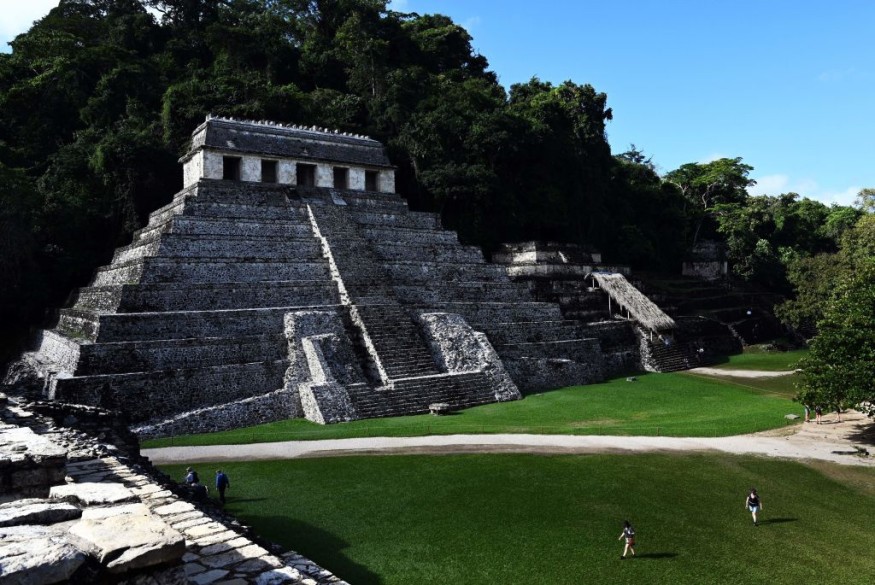Mexico Archeologists Dig Up Ancient Maya Grave Amid Maya Train Construction

Archaeologists in Mexico have made a remarkable discovery by unearthing a richly adorned human body in a grave that may date back more than 1,000 years, according to Reuters.
This discovery occurred in an area where construction work was being completed on a major tourist rail project, according to the country's National Institute of Anthropology and History (INAH).
The find took place this month during an archaeological salvage operation conducted concurrently with the construction of the multibillion-dollar tourist train project in southern Mexico.
The primary aim of this project is to attract tourists to the many ancient Maya sites in southern Mexico and the nearby popular beach resorts like Cancun and Tulum.
The rail project, known as the Maya Train, holds a high priority in the economic development plans of President Andres Manuel Lopez Obrador.
Consequently, it has received significant funding for archaeological efforts to expedite excavations and prevent construction delays, while archaeological projects in other parts of Mexico have faced budget constraints.
The Ancient Maya Grave
The recent discovery of the ancient Maya grave occurred during construction work on a hotel near the significant Maya ruins of Palenque in Chiapas state.
Palenque was once home to one of the most extensive and sophisticated urban centers of the ancient Maya civilization, Yahoo! News noted.
The skeletal remains were found in a stone box approximately 2 kilometers (1.2 miles) from the city's center, where towering temples and a vast palace compound are situated.
It is believed that the individual buried in this grave was an elite resident of the city, known in ancient Maya as Lakamha'.
Archaeologists also found three ceramic vessels, ear flares, and a pair of greenstone beads within the stone box.
The individual was interred with their head facing north, though further tests are required to determine its exact age and other characteristics.
The ancient Maya are credited with significant contributions to art, architecture, astronomy, and writing.
Palenque, like many other ancient cities in southern Mexico and parts of Central America, thrived from approximately 300 to 900 AD.
Ancient Maya Grave for Sacrificial Victim Also Found in Mexico Last Month
Archaeologists from INAH have uncovered a remarkable ancient Maya grave that sheds light on a human sacrifice and includes a precious jade ring, per Greek Reporter.
This discovery was made during meticulous excavations within the ancient Mayan city, El Tigre, or Itzamkanac.
This city, with its intriguing name translating to "the place of the lizard serpent," is situated in the Mexican state of Campeche, adjacent to the Rio Candelaria.
According to the official newsletter from INAH, the estimated antiquity of these findings dates back approximately 1,200 years, significantly contributing to our understanding of the rich history of the Maya civilization.
Diego Prieto Hernández, the head of INAH, shared this noteworthy discovery during a morning conference led by President Andrés Manuel López Obrador in Mexico.
He also discussed using a technology known as "Promeza" in archaeological investigations at such historical sites.
Promeza plays a pivotal role in shaping our contemporary understanding of the past by facilitating the exchange of insights and knowledge.
Furthermore, the individual discovered in this burial was positioned in a bent posture, and an exceptionally well-preserved jade ring was found alongside the remains.
This unique jade artifact stands out as an exceptional find.
Based on the characteristics of the containers and the archaeological context, experts suggest that this burial can be linked to the Late Classic period, which spans from 600 to 800 AD.
This timeframe aligns with the zenith of population and political influence in Mexico's ancient city of El Tigre, as reported by INAH.
This article is owned by Latin Post.
Written by: Mary Webber
WATCH: Tren Maya | The $10BN Mexican Train - From Details in Luxury
Subscribe to Latin Post!
Sign up for our free newsletter for the Latest coverage!
© 2025 Latin Post. All rights reserved. Do not reproduce without permission.













